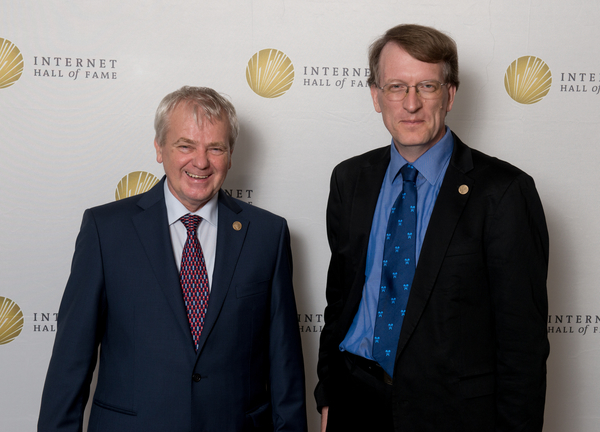As a technical adviser to the United States’ Federal Communications Commission (FCC) as well as a professor of computer science at Columbia University, he spends part of his time in New York teaching aspiring computer scientists, and the remainder in Washington D.C. advising the FCC on telecommunication policy so that it encourages innovation in technology. Schulzrinne tends to speak in a way that has “engineer” written all over it: precisely and without hesitation. If he says he’s going to give you four examples, he’ll give you four, not three and not five, and his train of thought never seems to run off the track. When the Internet Hall of Fame editorial staff caught up with him recently, he apologized for being three minutes late, but the FCC building he works in had just had a fire drill, and everyone had to go outside and stand around for a while. When we finally were able to chat, we found his conversation eminently worth waiting for. Here’s what he said about both of his jobs.
Q: The FCC is part of a massive federal bureaucracy. Can it really drive technical innovation?

A: It can and it does. Its mission has always been to facilitate innovation and it really has achieved that in some important ways. Let me give you four examples: WiFi, HDTV, close captioning for the deaf, and GPS were all enabled by policies set by the FCC. With WiFi, the FCC helped ensure that our system of spectrum assignment was very permissive; other nations had far less permissive rules. That’s why Wi-Fi technology was first widely deployed here. And I must say, it took some courage to enable technology that didn’t have an existing constituency. Regarding HDTV, the FCC was involved with standards development along with a number of other players, but it was the FCCs rules that enabled the smooth deployment of this innovation.
Less well known than WiFi or HDTV, but extremely important, is the close captioning and other technology that makes technology accessible to people with hearing impairments. The FCC mandated that this benefit be part of television technology. A related development, by the way, was the development of an Internet-based video service for those who speak sign language: They can sign or dial a number and get a person who works for one of six contracted entities, and that person communicates with the hearing person on the other end. This is the largest and most comprehensive program of its kind in the world, and it was due to the FCC, which enabled and still administers it.
As for GPS, it’s been in cellphones since 1996, when the FCC mandated “location accuracy,” requiring carriers to provide callers’ locations to 911 centers nationwide. From that time on – and this was well before the advent of smartphones – GPS chips have been built into all cellphones. This system works beautifully; Europe still doesn’t have as good a system as ours.
Q: What are the biggest challenges facing the FCC today?
A: Two come to mind very readily, and both involve transitions. On the “wireless” side of things, we are transitioning from the classical model, where each application was given its own slice of the spectrum, to a model that involves a shared, flexible use of the spectrum. The difficulty of the traditional model is illustrated by how long it has taken railroads to acquire spectrum for so-called positive train control — the system that could have prevented the tragic Amtrak accident in May. On the “wired” side of things, we are making the transition from landline phones to an “all-Internet” environment. I’m working on that with the FCC right now, in fact: The goal is to make sure the transition to the all-Internet environment happens with no loss of reliability. With landlines, when there was a power outage, our phones still worked, but today, with a cable modem, for example, we can’t assume that we’ll be able to make calls or access the Internet during an outage. Ensuring that we’ll be able to do that is a real challenge and an exciting problem to be working on.
Q: What are the good parts about teaching, and what are the bad parts?
A: One great thing is that teaching allows you – I might even say “forces” you – to keep up with developments outside your main area of focus. At research universities like Columbia, the incentive is to delve deeply into your own field, but you do get to teach a broader set of classes, as well. For example, I’m teaching cybersecurity, so I had to do extensive investigation into that, just to be able to teach it well. I also get to teach about Internet policy and economics, which are related to my own experience. But the best part about teaching is that, if you’re lucky, you get students who challenge you and ask questions you don’t see coming. They can really get you to think about things in ways you ordinarily wouldn’t.
On the other hand, the bad part is that there’s always that student who regards education as a business transaction. For that guy, it’s the consumer model: “I’ve paid this much for this number of credits, so hand them over.” He spends his time arguing that he should have gotten one point higher on this or that quiz. He doesn’t realize that education can be a fantastic apprenticeship/mentoring experience, and an intellectual adventure that you can create for yourself by engaging with ideas and people. So he goes for four years, constantly missing the point. I’m glad that most of my students “get it.”